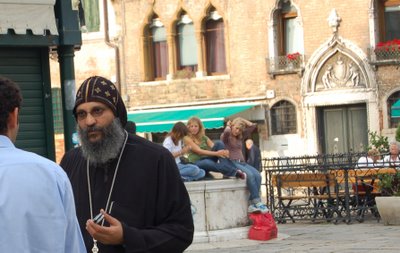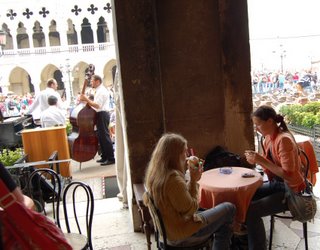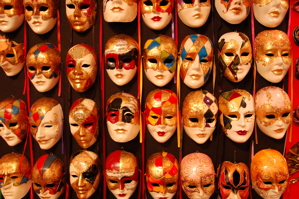
Vivaldi's time in Venice is the subject of an upcoming hollywood
biopic, with Joseph Fiennes playing Vivaldi.
The movie's scope is Vivaldi's time directing the girl's orchestra at the
Ospedale della Pietà. This was like an orphanage: the girls were wards of the state, given public purpose. Vivaldi put them to especially good 'use': no doubt they premiered the
Four Seasons, and hundreds of other concertos. It was a heady time for music in Venice, and Vivaldi's work there deeply inspired Bach, and all music henceforth.
These state wards were known as
conservatori. It is possible that Vivaldi's girls inspired our term
"music conservatory".
Conservatories were meant to conserve humans, who might otherwise die, or cause other trouble to a city. The policy and pattern is more or less ancient. It's human nature to take care of the unlucky. It's also human nature to put some burden upon them. Orphans for example, have lost their family and community ties, so they need an active program of community re-integration.
In the worst of cases, they are given work that doesn't even need doing ... to simply maintain the operation or profit of the institution itself. This "busy work" means no "net gain" for the community, and is most common in large cities or societies. More positive examples exist, which give the charges some choice, and a chance to prove themselves, choosing among farmwork, craftwork, public service, etc.
But something special happened at Vilvaldi's 'first' Music Conservatory. The conservatory itself seems to have helped stimulate the
subject, in this case, to new heights in music design & performance.
Vidal quotes Charles de Brosses, president of the Burgandy Parliament, who visited Venice two years before Vivaldi's death in 1741:
The girls are educated and maintained at the expense of the State, and their sole training is to excel in music. Thus they sing like angels, and play the violin, flute, organ, oboe, violoncello, and bassoon -- in fact, there is no instrument so big as to intimidate them. They are cloistered like nuns. They perform without outside help, and at each concert forty girls take part. I swear there is nothing prettier in the world than to see a young and charming nun, dressed in white, with a spray of pomegranate flowers over her ear, conduct the orchestra and give the beat with all the exactness imaginable.Apparently, 35 years later, English musician Charles Burney, having seen this successful phenomenon, tried to reproduce it with the Foundling Hospital in London. With less success.
But it is an inspiring idea, to create centers, or conservatories, dedicated to excellence, giving chances to those who have fallen out of the system. In fact, this should become again a part of the definition of the word "conservatory" ... the social purpose, combined with an attempt to restimulate quality, giving real form to our hopes for a better world. This is of course the goal of education, and continuing education, which is woefully underfunded throughout the world. The money is there, but private interests tend to take public money for themselves, so conservatories are terribly rare -- when they launch, they are typically initiated by dreamers, and supported by a private community, until they slowly garner some public support. But they are forced to fight for every penny ... art and skill and potential are eroded and lost under such conditions. If the future is to be better, we must be aware that the conservatory is a successful pattern, and do our best to make it easy for them to exist.
Drawing by Greg Bryant, sometime in 1999





















